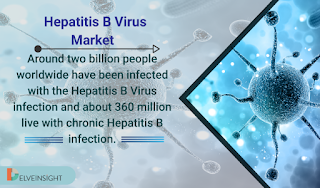Down Syndrome
Down
Syndrome
or DS, is a genetic disorder which is caused by the presence of a part of the
third copy of chromosome 21. It is also named as trisomy 21. Down Syndrome is a
kind of cerebral disability which tends to stop the growth of a child at a very
certain age. Generally, people are inherited with 23 pairs of chromosomes, but
this disability occurs when the child develops with an extra part of chromosome
21.
Parent of
the disabled ones is genetically normal with no symptoms of this disease. Studies
have shown that this extra part of chromosome 21 is believed to occur by
chance, still, it can be detected at a very early stage of pregnancy with the
help of diagnostic testing or genetic testing, which is done after birth.
Diagnostic testing can be done by CVS (chorionic villus sampling) and
amniocentesis and provide 100% accurate results. There are only 1% chances that
a person is found to be suffering from Down Syndrome having a hereditary
component. Those who are suffering from Down Syndrome actually show physical
and intellectual disabilities, also showing mental abilities similar to an
8-9-year-old child.
Parents
having one child with Down Syndrome, have 1% chances of having another with the
same disability.
Down Syndrome
affects the life of a person as a whole and there is no proven lifelong
treatment for it. Symptoms include delayed physical growth, eye diseases, low
muscle tone, and loose joints. They have an increased chance of health diseases
like congenital heart diseases, epilepsy, thyroid, blood cancer, and other
physical and neurological disorders. Though children suffering from Down Syndrome
require extra attention, love, and care, they exhibit different talents.
Approximately,
1 in 700 babies in the U.S. is born with Down Syndrome. In the U.S., around
6000 babies are born every year with Down Syndrome.
The main
reason for Down Syndrome is still not discovered. However, the age of the
mother is still a risk factor. The older is the age of the mother, higher is
the chances of her giving birth to a child having Down Syndrome.
No such
treatment for Down Syndrome has been discovered yet but there are ways to
detect it at an early stage. The diagnosis helps in detecting this disability
pre and post birth. Screening is another method for detecting Down Syndrome at
an early stage. It is usually performed when the woman is 10-15 weeks pregnant
while blood tests and ultrasounds are other methods too. There are no
medications or drugs allocated for the treatment of Down Syndrome but there are
some medications which help to relieve the pain.
Pharma
market research firms are working so hard and researching on different platforms
to find other effective ways for the treatment of Down Syndrome. Delveinsight
is one of those, offering reports, pipeline insights, market insights.


Do you understand there's a 12 word sentence you can communicate to your man... that will induce deep emotions of love and instinctual attraction to you buried inside his chest?
ReplyDeleteThat's because hidden in these 12 words is a "secret signal" that fuels a man's impulse to love, treasure and guard you with his entire heart...
12 Words That Fuel A Man's Love Response
This impulse is so built-in to a man's genetics that it will drive him to try better than ever before to love and admire you.
Matter-of-fact, fueling this influential impulse is so binding to getting the best possible relationship with your man that the moment you send your man one of the "Secret Signals"...
...You will immediately find him open his heart and soul to you in such a way he haven't experienced before and he will perceive you as the one and only woman in the universe who has ever truly tempted him.